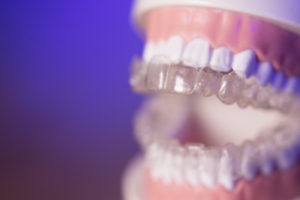There are several reasons why we could be bedridden, but most of the time, it’s because we are severely injured or sick. But even though we’re stuck in a hospital bed or our bed at home, we still need to keep ourselves mentally and physically fit. Of course, we don’t necessarily have to do heavy workout routines to keep ourselves busy in fit when we’re bedridden.
Why Should We Exercise Even If We Are Bedridden?
Still, most people feel that when they’re bedridden is pressure build-up on their backs and several parts of their body. Typically, this can be remedied when a person can shift between different positions, but this isn’t necessarily the case for patients who are bedridden or are obliged not to move because of their current state of health.
Most of the time, bedsores (the build-up of pressure) are the leading causes of various health complications such as cellulitis, meningitis, and other serious diseases. It’s also essential to maintain clean skin.

It’s important to note that being bedridden for a long time can take a toll on your posture, especially your spine. In some cases, you might have to exercise your back to strengthen the muscles holding your spine in place. However, some injuries and health complications might make it harder for a person to sit up straight. Having a portable ceiling lift is an excellent way of supporting the back of the patient.
Exercise is also a great way to increase blood flow and prevent muscles from atrophying, which is quite common when we’re living a sedentary lifestyle.
So what are some essential exercises that we can do while we’re in bed? Here’s what you’ll need to know. No worries, you don’t have to do any hard-hitting exercises.
Passive Exercises
These exercises aren’t as intense as the active forms and are generally designed to promote a wide variety of motion on the joints. Typically, this is used to strengthen the ankles, hips, elbows, and patient shoulders. If there is a caretaker present, it’s essential to move the patient’s joins now and then.
One of the most common exercises is the ankle plantarflexion-dorsiflexion, which can help promote movement in the lower body while maximizing comfort and blood circulation. The patient will usually lie on their back, and the caregiver will hold the ankle and heel of one foot. In most cases, the caretaker will bend the foot forward into a plantarflexion. They then will push the foot upwards into dorsiflexion. These positions are then held in place for five to ten seconds.
Active Exercises
When a patient has recovered a fair amount of movement, it’s now more comfortable to perform active exercises without supervision and help. As the name suggests, these exercises require more strength and will have more movement. Activities such as wrist rotations can help mitigate carpal tunnel syndrome and other health complications.
When the patient placed her arm and her calm on the bed and then rotated her wrists, the thumb part will lift off the bed. Right after, the patient can then lift the hand in the opposite direction so that the pinkie will be the one lifting off the bed. While this is happening, the forearm will remain motionless on the bed so that the wrist will be isolated.
Strengthening Exercises
This type of exercise is designed to prevent atrophy in patients. It’s important to note that muscles can easily weaken and thin if they’re not placed to use. It’s essential to strengthen muscles since this allows patients to do activities such as dressing up, walking, and interacting with different objects.
An example of these exercises is leg lifts, which are great for strengthening the glutes. Kegels is also known for being a useful exercise in maintaining the buttocks area.
Flexibility Exercises
Exercises such as hamstring stretches are great ways of improving flexibility, which can help lengthen muscles. Improving the flexibility of muscles can help prevent atrophy.
There are a variety of exercises that you can do while you’re bedridden. Although it’s not as intense as more active forms of exercise, these are still necessary to prevent health complications.
Ultimately, there’s not much that you can do when you’re bedridden since being in bed can limit any movement. Although, you can always do some stretches with your arms, legs, and hands. You don’t need to do strenuous exercises since this can cause more harm than good. Overall, you’ll need to take it day by day; you don’t have to push yourself to the limit to maintain your physical strength.



















